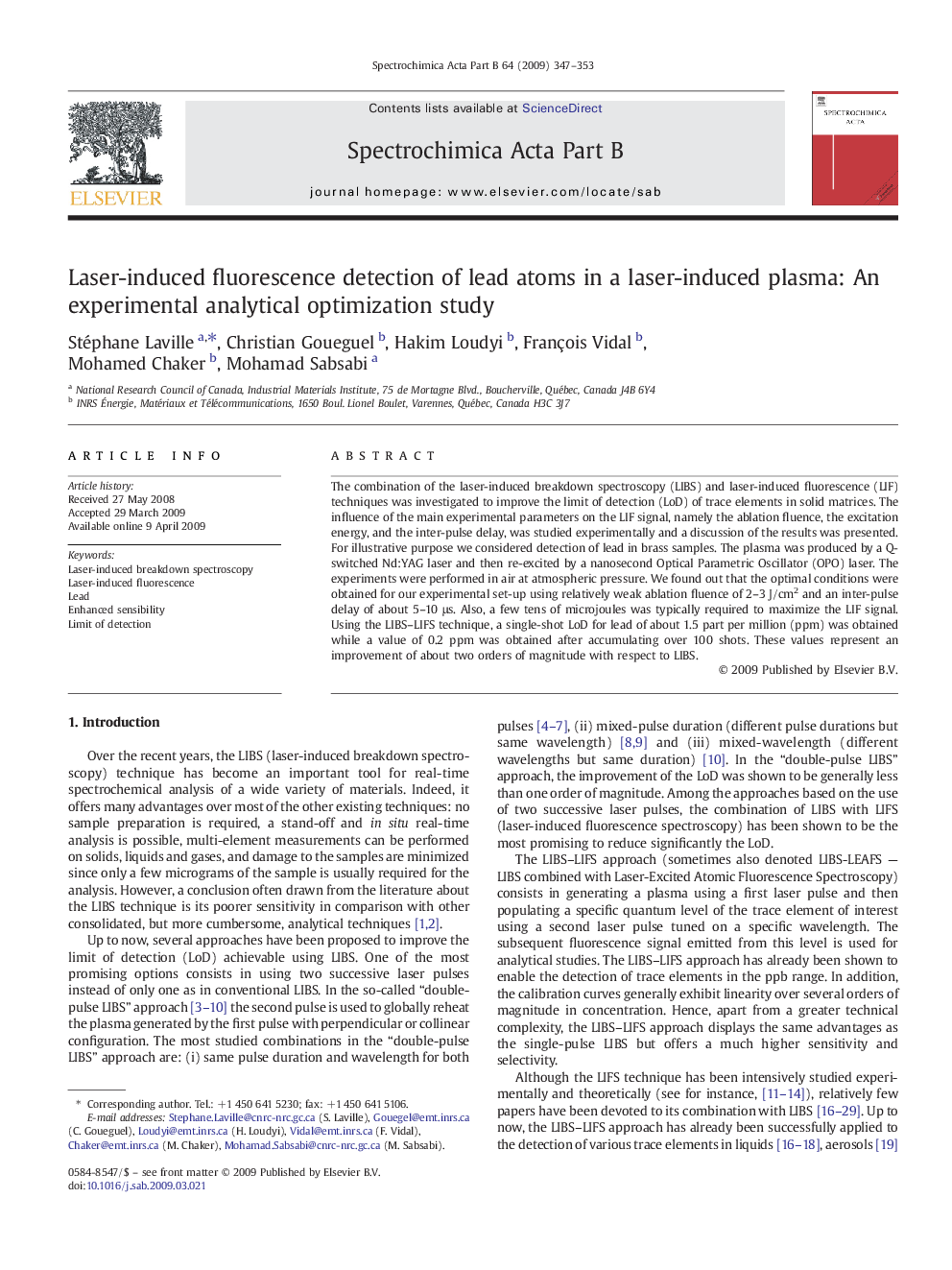| Article ID | Journal | Published Year | Pages | File Type |
|---|---|---|---|---|
| 1240400 | Spectrochimica Acta Part B: Atomic Spectroscopy | 2009 | 7 Pages |
The combination of the laser-induced breakdown spectroscopy (LIBS) and laser-induced fluorescence (LIF) techniques was investigated to improve the limit of detection (LoD) of trace elements in solid matrices. The influence of the main experimental parameters on the LIF signal, namely the ablation fluence, the excitation energy, and the inter-pulse delay, was studied experimentally and a discussion of the results was presented. For illustrative purpose we considered detection of lead in brass samples. The plasma was produced by a Q-switched Nd:YAG laser and then re-excited by a nanosecond Optical Parametric Oscillator (OPO) laser. The experiments were performed in air at atmospheric pressure. We found out that the optimal conditions were obtained for our experimental set-up using relatively weak ablation fluence of 2–3 J/cm2 and an inter-pulse delay of about 5–10 μs. Also, a few tens of microjoules was typically required to maximize the LIF signal. Using the LIBS–LIFS technique, a single-shot LoD for lead of about 1.5 part per million (ppm) was obtained while a value of 0.2 ppm was obtained after accumulating over 100 shots. These values represent an improvement of about two orders of magnitude with respect to LIBS.
